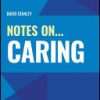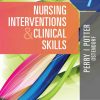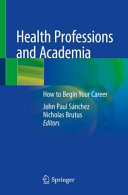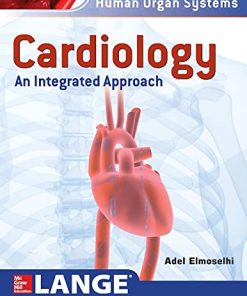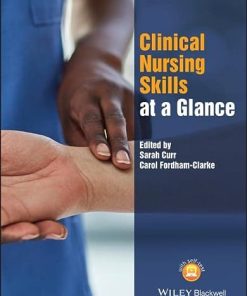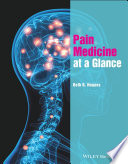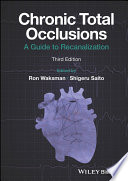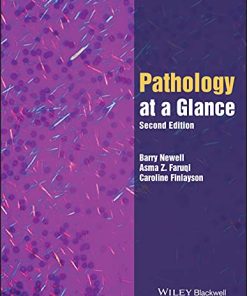Independent and Supplementary Prescribing At a Glance 1st Edition by Barry Hill, Aby Mitchell 1119837930 9781119837930
$50.00 Original price was: $50.00.$25.00Current price is: $25.00.
Independent and Supplementary Prescribing At a Glance 1st Edition by Barry Hill, Aby Mitchell – Ebook PDF Instant Download/DeliveryISBN: 1119837930, 9781119837930
Full download Independent and Supplementary Prescribing At a Glance 1st Edition after payment.
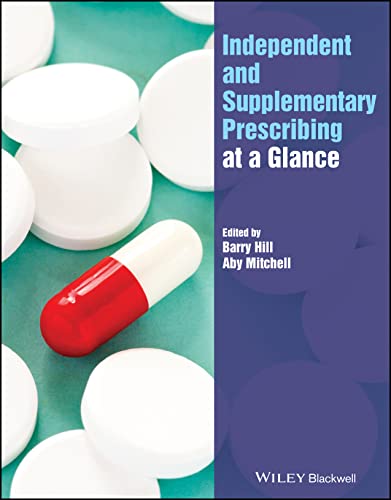
Product details:
ISBN-10 : 1119837930
ISBN-13 : 9781119837930
Author: Barry Hill, Aby Mitchell
Independent and Supplementary Prescribing At a Glance
The market-leading at a Glance series is popular among healthcare students and newly qualified practitioners for its concise, simple approach and excellent illustrations.
Each bite-sized chapter is covered in a double-page spread with clear, easy-to-follow diagrams, supported by succinct explanatory text.
Covering a wide range of topics, books in the at a Glance series are ideal as introductory texts for teaching, learning and revision, and are useful throughout university and beyond.
Independent and Supplementary Prescribing At a Glance 1st Table of contents:
Part 1: Prescribing
1 Scope of Practice NMP
Non‐Medical Prescribing (NMP)
Royal Pharmaceutical Society (RPS)
Scope of practice
The benefits of NMP
NMP healthcare professionals
Registered nurses
Pharmacists
Physiotherapists
Therapeutic radiographers
Optometrists
Podiatrists
Paramedics
Prescribing supervisor
Following completion of an NMP course
2 Professional, legal, and ethical issues
Prescribing governance
3 Independent and supplementary prescribing
Independent prescribing
Supplementary prescribing
The supplementary prescribing process
4 Community practitioner nurse prescriber (V150/V100)
5 Critical thinking and clinical reasoning
Cognitive and metacognitive processes
Dual process theory and cognitive bias in diagnostic reasoning
Integrating the clinical reasoning process into the clinical consultation
6 Exploring interventions
Formularies
Guidelines
7 Evidence‐based diagnosis
Bayes’ theorem
2 × 2 contingency table
The inaccuracies of diagnostic accuracy
STARD statement
Clinical scoring systems
8 Referring to other members of the multidisciplinary team
Written/email referrals
Face‐to‐face referrals
Telephone referrals
Dealing with difficult referrals
Learning to refer
9 Clinical management plans
Drawing up a CMP
Inclusions on the CMP
Medications that can be included on CMPs
Managing the patient using the CMP
Terminating the CMP
Part 2: Consideration of non-pharmacological and pharmacological interventions
10 Non‐pharmacological approaches
Introduction to non‐pharmacological approaches
What are non‐pharmacological approaches?
Social prescribing
Non‐pharmacological interventions
Summary
11 Pharmacological treatment options
12 Prescribing reference guides
The British National Formulary (BNF) and the British National Formulary for Children (BNFc)
Monthly Index of Medical Specialities (MIMS)
Electronic Medicines Compendium (EMC)
13 Medication selection
Communication
Intolerance and allergies
Patient’s personal implications
Existing medical conditions
Interactions between drugs
Polypharmacy
Monitoring for treatment
Limitations to medication choice
14 How to prescribe
Start with the essentials
Information from the patient
Selection of the product
Special groups
The actual prescription
Remember to reflect
15 Risk benefit assessment
Deciding to prescribe
Benefits (efficacy)
Safety
Suitability
Cost
16 Pharmacodynamics
Pharmacodynamics
Agonists
Antagonists
Therapeutic index
Receptor selectivity
Drug efficacy
Drug effectiveness
Drug potency
Dose response
17 Pharmacokinetics
Pharmacokinetics
Absorption
Distribution
Metabolism
Elimination
18 Holistic assessment
19 Quality of life
Ability to cope with regular medications
Patient engagement in self‐management
Regimen simplification
20 Evidence‐based practice
21 Medicines and public health
Public health
Challenges
Opportunity
Responsibilities
Global action
22 Infection prevention and control
Chain of infection
Breaking the chain of infection
Definition of antimicrobial resistance (AMR)
Antimicrobial stewardship
Start Smart ‐ Then Focus
Point‐of‐care testing – C‐reactive protein (CRP)
Patient education
Part 3: Advanced history taking and examination
23 Consultation models
Classification of consultation models
Calgary–Cambridge guide to the medical interview
The cone technique
Ideas, concerns, and expectations (ICE)
Communication
Triggers to consultation
Consultations with an alternative agenda
Consultation and non‐medical prescribing (NMP)
24 Principles of history taking and physical examination skills
History taking
Skills needed to elicit information
History taking and prescribing red flags
General aspects of physical examination
Physical examination for special situations
Evidence‐based physical diagnosis
Conclusion
25 Preparation for objective structured clinical examination
OSCEs: general principles
Revision tools
Marking sheets
Before the examination
During the examination
After the examination
26 History taking for patients who lack mental capacity
Mental capacity
Principles of good prescribing
Supported decision‐making
27 Prescribing and the mental capacity act
Introduction
The MCA 2005
28 Skin history taking and physical examination
Introduction
History
Past medical history (PMH)
Drugs
Allergies
Family and social history
Social history
Psychosocial impact
Review of systems
Examination
Examination key points
Investigations
Documentation
Diagnoses not to be missed
29 Neurological history taking and physical examination
Presenting complaint (PC)
History of presenting complaint (HPC)
Past medical history (PMH)
Family history
Social history (SH)
Drug history (DH)
Review of systems (ROS)
Physical examination
Summary
30 Head, ears, eyes, nose, and throat
Sample of normal examination documentation
Sample of abnormal examination documentation
31 Lymph node assessment
Lymphadenopathy
Assessing lymphadenopathy
Causes of lymphadenopathy
32 Endocrine history taking and physical examination
Introduction
Endocrine history review
Presenting complaint/history of presenting complaint
Past medical and surgical history
Drug history
Social history
Family history
Systematic enquiry
Examination
Inspection
Palpation
Percussion
Auscultation
33 Respiratory
History Taking
Physical examination
Supporting investigations
34 Cardiovascular history taking and physical examination
History taking
Cardiovascular examination
35 Abdominal history taking and physical examination for non‐medical prescribers
History
Clinical examination
Determining the differential diagnosis
Investigations
Laboratory
Radiology
36 Genitourinary system history taking and physical examination
History taking
A complete history of the GU system
Physical examination
External male genital examination
External female genitalia examination
37 Musculoskeletal history taking and physical examination
Part 4: Shared Decision-making
38 Equality, diversity, and inclusion
Age
Ethnicity
Sex
Religion or belief
39 Concordance
Follow‐up and review of medications
40 Building relationships
Communication
Essential elements
Trust
Focus
Anticipate
Know
Evaluate
Deprescribing
Setting boundaries
41 Inclusive prescribing and informed choices
Informed choice and capacity
Shared decision‐making
Decision aids
42 Medicine’s optimisation
Medicine’s adherence
Medicine’s reconciliation
Polypharmacy
Hyper polypharmacy
Appropriate polypharmacy
Deprescribing
Medicine’s review
43 Social prescribing
What are the risks of social prescribing?
Who can make a social prescribing referral?
Embedding social prescribing in practice
Part 5: Prescribing Practice
44 Adverse drug reactions
Type A (augmented)
Type B (bizarre)
Type C (chronic)
Type D (delayed)
Type E (end of use)
Type F (failure)
Reporting ADRs
Black Triangle Scheme
45 Frameworks and guidelines
Introduction
Legal frameworks
Professional standards
Regulatory frameworks
Guidance frameworks (guidelines)
46 Prescribing generic products
Benefits of generic prescribing:
When not to prescribe generically
Anti‐epileptic medication
Summary
47 Medication calculations
Conversions, equivalents, and abbreviations
Ratios
Percentages
Calculate a dose by patient weight
Formula
Critical care calculations
Critical care formulas
48 Non‐medical authorisation of blood components
Blood components versus products
Non‐medical prescribers and authorisation of blood components
Indications, thresholds, and targets
Specific requirements
Risks, complications, and side effects
Reactions
Error
Infection
Long‐term transfusion complications
49 Electronic prescribing
Why move to electronic prescribing
The 5 R’s
Benefits
Drawbacks
Part 6: Patient education and health promotion
50 Unlicensed medicines
Why do medicines have a licence?
Prescribing unlicensed medicines
Prescribing these medicines
Who can prescribe ‘unlicensed medicines’?
Things to consider
‘Special’ medicines
51 Record‐keeping and data management
Introduction
Health (medical) record
Guidance for good record‐keeping
Professional obligations
National guidance for record‐keeping
Guide for making entries in health (medical) records
Principles of good record‐keeping in non‐medical prescribing
Data management
52 Adherence
Suitability for the patient
Ability to cope with regular medications
Patient engagement in self‐management
Regimen simplification
53 Patients recognising deterioration
Introduction
Supporting patients to recognise their own deterioration
Supporting elements to escalation of deterioration
Priorities of patient education regarding deterioration
54 Patients’ responsibility and self‐management
Introduction
Medicine management
Medicines optimisation
Shared decision‐making
Involving patients in decisions about their medicines
Self‐management
References
Part 1: Prescribing
Part 2: Consideration of non‐pharmacological and pharmacological interventions
Part 3: Advanced history taking and examination
Part 4: Shared Decision‐making
Part 5: Prescribing Practice
Part 6: Patient education and health promotion
People also search for Independent and Supplementary Prescribing At a Glance 1st:
difference between independent and supplementary prescribing
non medical independent and supplementary prescribing
critical analysis of independent and supplementary prescribing
bournemouth university independent and supplementary prescribing
legal framework of independent and supplementary prescribing
Tags: Independent, Supplementary, Prescribing, Glance, Barry Hill, Aby Mitchell
You may also like…
Medicine - Clinical Medicine
Health Professions and Academia: How to Begin Your CareerJohn Paul (J.P) Sánchez
Erotica - Fiction
Medicine - Cardiology
Medicine - Nursing
Medicine - Health-Related Professions
Romance - Contemporary Romance
Uncategorized
Medicine & Health Science


